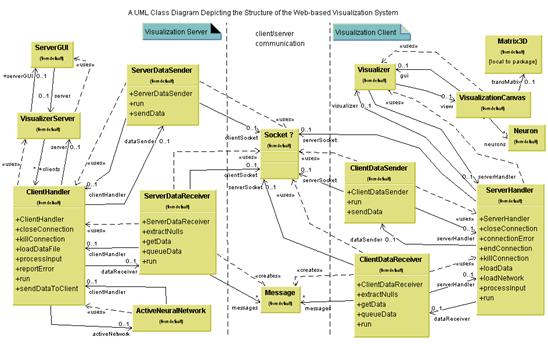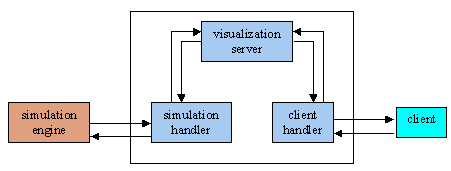|
Distributed Multimedia Application
For Integrated Scientific Simulation And Visualization
|
||||||||||||||||
Abstract
Simulation and visualization systems are traditionally stand-alone computer applications, but for the past four years more Web-based simulation and/or visualization systems have been developed to enable the deployment of the applications over the Web. The major advantage of moving a stand-alone application to the Web is the wide availability of Web browsers, which can be used as the front-end user interface to the application by users potentially across the globe. At IUP, a Web based multimedia visualization system has been developed to enable remote viewers to interactively and dynamically manipulate neural network models and the data generated by the simulation experiments. In this paper, we discuss the distributed framework employed in the application, the real-time synchronization issues, and future extension of the system to increase its scalability.
Introduction
The significance of scientific simulation and visualization in scientific inquiry has dramatically increased for the past decade.The following excerpt (note 1 ) very well illustrates the significance of computer simulation: "… computer simulation has now joined theory and experimentation as a third path to scientific knowledge. Simulation plays an increasingly critical role in all areas of science and engineering."
Simulation and visualization systems are traditionally stand-alone computer applications. For the past three to four years, with the widespread use of Web and the advancement of related technology, more Web-based simulation and visualization systems have been developed (Chen Chen and Hong 1998, Davis Chen and Brook 1998, Roccetti and Salomoni 2001). At IUP, a Web based real-time visualization system has been developed to enable remote viewers to interactively and dynamically manipulate scientific models and data generated by the simulation experiments. We reported, in a recent paper (Yang 2001), the application of such a system toward the remote visualization of neural network simulations. The design of the system was published in another paper (Yang Cross and MacMaster 2001).
In the rest of this paper, we focus our discussion on the distributed framework underlying a real-time on-line distributed system, especially the communication between the simulation engine and the visualization server, and that between the visualization server and the visualization client.
A Distributed Real-Time Simulation/Visualization Framework
The major advantage of moving a stand-alone application to the Web is the wide availability of Web browsers, which can be used as a universal front-end user interface to the back-end application by users potentially across the globe. A university Physics course, for instance, may be taught as a Web-based course over several distributed sites. An experiment conducted by the professor at the central site may be viewed, in real time, by students who are physically present at one of the remote sites.
The successful development of such a distributed real-time system, of course, depends on the integration of various technologies, including in particular the distributed software architecture and Web-based technologies. Issues such as real-time synchronization of data transmission and rendering will need to be addressed to enable the system to deliver real-time performance (Chen Chen and Hong 1998, Roccetti and Salomoni 2001). Real-time data communications may be achieved by adopting protocols such as RTP (note 2 ) (Parnes Synnes and Schefström 2000).
The distributed framework of a real-time on-line simulation and visualization system is depicted in Figure 1.There exist three primary components in the system: the simulation engine, the visualization server (i.e., the coordinator), and the visualization clients. The coordinator is integrated with a Web server and listens at network ports for incoming connection requests issued by the clients. In our current implementation, the visualization server is a Java application while the clients are Java applets. Communication between the server and the clients are via sockets. The adoption of Java applets takes advantage of Java’s portability feature and enables virtually ubiquitous communication with clients running on various kinds of devices, including desktop computers, laptops, and hand-held devices, et. al.
Alternatively, the client
may be implemented as an object employing different technologies, such
as CORBA, EJB, RMI, or intelligent agents.
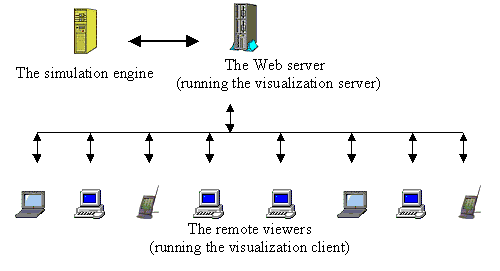
Figure 1: Illustration of the distributed framework
The simulation engine is an independent application. Due to its high processing overhead, a simulation program is best run as the only or at least the primary process on a high-end computer. In our current experiment, we use a C++ neural network simulation program as the simulation engine, which communicates with the coordinator over sockets.
The visualization server coordinates the communication between the remote clients and the simulation engine.Due to the many (clients) to one (simulation engine) relationship between the remote clients and the simulation engine, in real time a remote user may either start the simulation (if the user has the administrator privilege) or join an existing simulation. Alternatively a ‘play-back’ mode may be adopted. The coordinator may record a simulation in a binary file and, whenever a new client requests to view the simulation, the coordinator simply sends the data over to the client.In a controlled environment, such as a Web-based class over the net, all the clients may be coordinated to start the connection to the visualization server at the same time.
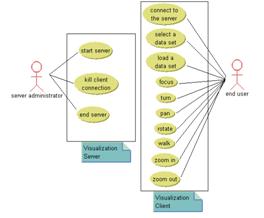
Figure 2: Use cases of the visualization system
Figure 2 illustrates different
use cases of the system by the server administrator and the end users,
respectively.
A user of the system may remotely connect to the visualization server,
select and load a data set generated by the simulation engine, and then use
one of the control commands to view and manipulate the 3-dimensional objects
representing the underlying model. On
the other hand, the server administrator may take actions such as starting
the visualization server, viewing the client connections, killing one of the
client connections, or terminating the server.
A snapshot of the server administration screen is shown as Figure 3.
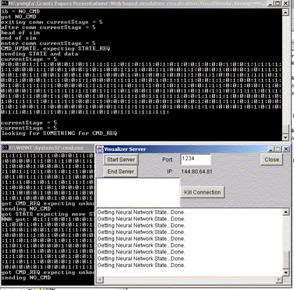
Figure 3: Administration screen for the simulation and the visualization
servers
Communication between the Visualization Clients and the Coordinator
Communication between the visualization server and the client is via sockets.As depicted in Figure 4, the ServerDataReceiver and the ServerDataSender classes, defined in the visualization server, interact with the ClientDataReceiver and the ClientDataSender classes, defined in the visualization client, by sending and receiving messages over sockets. Each user’s attempt to access the system triggers the instantiation of a ClientHandler by the VisualizationServer. While each client has only one ServerHandler,which handles communication with the visualization server, the VisualizationServer may instantiate multiple ClientHandler,one for each of the clients. A client’s request is forwarded by its ServerHandler to the respective ClientHandler, which then forwards the request to the VisualizationServer. If necessary (for example, a user’s request is to change the underlying architecture), the VisualizationServer may eventually forward the request to the simulation engine to have the request fulfilled.
